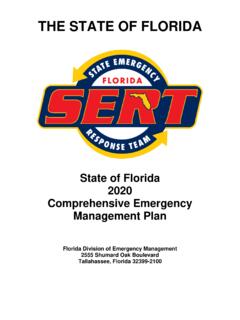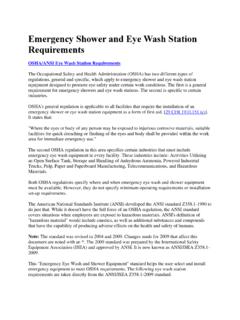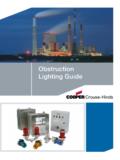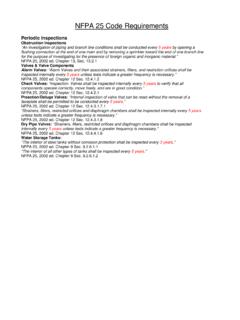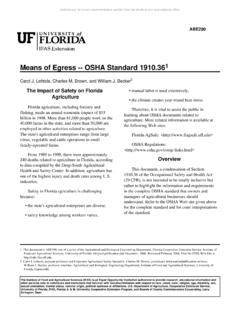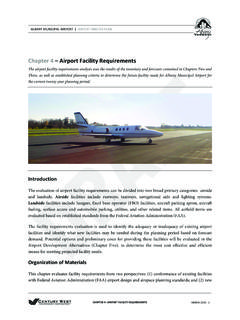Transcription of Technical Topic: Guidance for Pools and Outdoor Kitchens ...
1 Tech Topic: Pools , Outdoor Kitchens (November 2010) 1 Technical Topic: Guidance for Pools and Outdoor Kitchens /Bars in Flood Hazard Areas Floodplain Management Office Florida Division of Emergency Management November 2010 Several questions have been asked recently about how communities should review and regulate pool equipment and pool controls when Pools are installed in special flood hazard areas. Another question was asked about Outdoor Kitchens and Outdoor bars. DEM has reviewed various Guidance documents published by FEMA and finds no Guidance that explicitly addresses these types of development. The NFIP requirements are intended to satisfy two performance expectations: that development is reasonably safe from flooding" and that development is undertaken in ways that "minimize flood damage." For buildings, the primary way those expectations are satisfied is by elevating the lowest floors to or above the flood level. For all of the requirements , which vary somewhat by flood zone ( , A zone or V zone), see 44 CFR Section or the flood damage prevention regulations adopted by all flood-prone communities in Florida.
2 The NFIP regulations and local regulations also require that utilities, equipment and appliances that serve buildings must be elevated or they must comply with a performance-based alternative that allows location below the Base Flood Elevation if electrical, heating, ventilation, plumbing, and air conditioning equipment and other service facilities that are designed and/or located so as to prevent water from entering or accumulating within the components during conditions of flooding [see 44 CFR (a)(3)(i)]. However, the NFIP does not have explicit requirements for equipment and applicances that do not serve buildings, such as pool equipment and pool controls or Outdoor Kitchens /bars. Local floodplain management regulations require communities to regulate all development, and the term development is broadly defined. Thus, all activities are regulated. The question then becomes what are the standards that should be used when reviewing non-building development?
3 Below is Guidance that is specific to Pools (and pool controls, equipment and tanks), followed by Guidance for Outdoor Kitchens and bar setups on restaurant/hotel decks and patios. And finally, DEM is aware that some people believe that whether something is or is not covered by federal flood insurance influences whether and how communities regulate development in special flood hazard areas. This is not correct. Communities are required to regulate all development. DEM Floodplain Management Office Helpline: 850-413-9960 Tech Topic: Pools , Outdoor Kitchens (November 2010) 2 ** Guidance for Regulating Swimming Pools , Pool Controls, Pool Equipment and Tanks in Flood Hazard Areas in Florida Florida s communities are required to issue permits for development in special flood hazard areas, including the installation of swimming Pools and associated controls, equipment and tanks. Local officials must examine these proposals and consider the following: 1.
4 Pools . How the pool itself is handled depends on the flood zone and whether the pool is in-ground, above-ground, or a combination (perhaps with associated grading and fill). The following provisions were recently approved and will appear in the 2010 Florida Building Code, Building and the 2010 Florida Building Code, Residential. In the meantime, these provisions offer Guidance that meets the intent of the NFIP and local floodplain management regulations: 2010 Florida Building Code, Building Flood hazard areas. Public swimming Pools installed in flood hazard areas established in Section shall comply with Section 1612. Note: Sec. 1612 refers to ASCE 24, Flood Resistant Design and Construction, which includes provisions for Pools in Sec. Primarily, Pools are to withstand flood-related loads and load combinations and if structurally connected to a structure, designed to function as a continuation of the structure. Additional requirements apply in coastal high hazard areas (V zones) and Coastal A Zones.
5 Flood hazard areas. Private swimming Pools installed in flood hazard areas established in Section shall comply with Section 1612. 2010 Florida Building Code, Residential A ZONES Pools in flood hazard areas. Pools that are located in flood hazard areas established by Table (1), including above-ground Pools , on-ground Pools , and in-ground Pools that involve placement of fill, shall comply with Sections or Exception: Pools located in riverine flood hazard areas which are outside of designated floodways. Pools located in designated floodways. Where Pools are located in designated floodways, documentation shall be submitted to the building official, which demonstrates that the construction of the pool will not increase the design flood elevation at any point within the jurisdiction. Pools located where floodways have not been designated. Where Pools are located where design flood elevations are specified but floodways have not been designated, the applicant shall provide a floodway analysis that demonstrates that the proposed pool will not increase the design flood elevation more than 1 foot (305 mm) at any point within the jurisdiction.
6 Tech Topic: Pools , Outdoor Kitchens (November 2010) 3 V ZONES Pools . Pools in coastal high-hazard areas shall be designed and constructed in conformance with ASCE 24. Note: For additional Guidance on Pools in V Zones, also see FEMA Technical Bulletin 5, Free-of-Obstruction requirements , 2. Pools and Enclosures. a. Pools in any flood zone shall not be fully enclosed by walls and roofs. Walls on all sides are not allowed because the resulting building would be an accessory structure, and the NFIP limits the use of accessory structures that are below the Base Flood Elevation to parking of vehicles and storage. Pools are not allowed in enclosures, even if the walls are glass, breakaway walls (V zones), or walls with flood openings (A zones) because recreational use is not a permitted use. Pools may be surrounded with lattice, insect screening, or aluminum screening. b. The NFIP allows Pools to be placed under elevated buildings only if the top of the pool and accompanying deck or walkway are flush with the existing grade, and only if the space around the pool is not enclosed on all sides with walls (see explanation above regarding enclosing Pools with walls).
7 Designs for V zone buildings with Pools underneath must be certified by a registered design professional that the building and pool will not be subject to flotation or displacement that will damage building foundations during a flood. [Note: For additional Guidance on swimming Pools in V Zones, see FEMA Technical Bulletin 5, Free-of-Obstruction requirements , ] 3. Pool controls. Pool controls must be elevated to or above the Base Flood Elevation. Pool controls shall not be mounted on walls intended to break away under flood loads. If controls cannot be elevated and still comply with safety requirements , the controls may be permitted below the Base Flood Elevation if on a separate GFCI circuit. 4. Pool equipment. In the interest of meeting the expectation that the equipment is "reasonably safe from flooding" and to "minimize flood damage," communities should not simply ignore the risk and allow equipment installations at-grade. Pool equipment must either: a.
8 Be elevated and securely anchored to a platform; the height of the platform could either be to/above the Base Flood Elevation or as high as practical, given limitations on the owner's access (partial elevation reduces exposure to more frequent flooding than the base flood); or b. If not elevated, be anchored to prevent flotation and protected to prevent water from entering or accumulating within the components during conditions of flooding. Tech Topic: Pools , Outdoor Kitchens (November 2010) 4 5. Pool equipment buildings. Buildings that house pool equipment are accessory structures. The buildings must either be elevated or, if not elevated, be constructed to comply with the pertinent requirements for accessory buildings (allowed if used only for parking or storage) based on the flood zone. 6. Tanks. Tanks must meet the requirement to either be elevated or anchored to resist anticipated flood loads ( , see ASCE 24, Section ). 7. Pool chemicals.
9 Communities are encouraged to specify that pool chemicals are stored above the Base Flood Elevation. Tech Topic: Pools , Outdoor Kitchens (November 2010) 5 ** Guidance for Regulating Outdoor Kitchens and Bars in Flood Hazard Areas in Florida Florida s communities are required to issue permits for development in special flood hazard areas, including the installation of Outdoor Kitchens and structures for Outdoor bars. Local Officials must examine these proposals and consider the following: 1. Structures associated with Outdoor Kitchens /bars. Any structure that is not a walled and roofed building must comply with the applicable provisions of the local floodplain management regulations and the Florida Building Code, Building or the Florida Building Code, Residential. If located in flood hazard areas, structures such as counter tops and bars with roof/shade coverings are not required to be elevated provided the structure is anchored to prevent flotation during conditions of flooding.
10 2. Decks and patios. Decks and patios may be constructed below the Base Flood Elevation provided the deck/patio is: a. Structurally independent from the building; or b. If structurally connected, the building and deck/patio must be designed to function as a continuation of the load-bearing structure; and c. If located in a V zone, the lowest horizontal structural member shall be at or above the Base Flood Elevation and elevated on piles or columns in conformance with the standard V zone requirements . [Note: For additional Guidance on decks and patios in V Zones, see FEMA Technical Bulletin 5, Free-of-Obstruction requirements , ] 3. Appliances and equipment. In the interest of meeting the expectation that appliance and equipment installations are "reasonably safe from flooding" and to "minimize flood damage," communities should not simply ignore the risk and allow installations at-grade. Appliances and equipment must be anchored to prevent flotation and protected to prevent water from entering or accumulating within the components during conditions of flooding.

